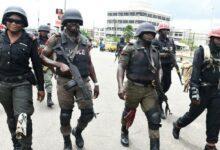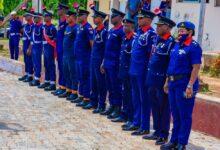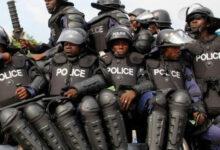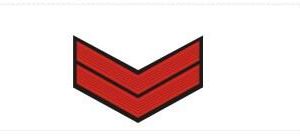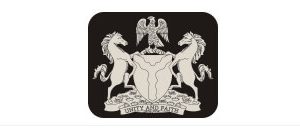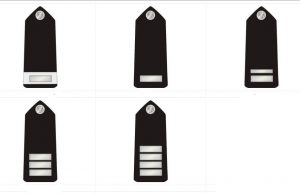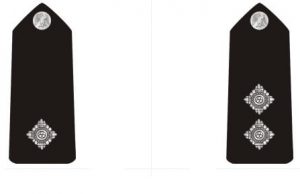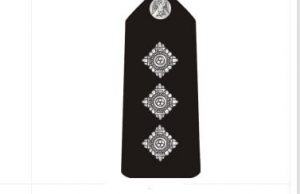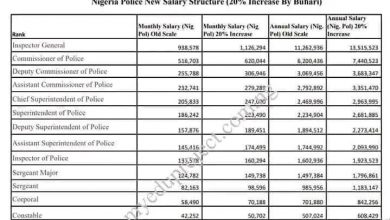Nigerian Police Ranks And Symbols
History of the Nigerian Police
Nigeria Police Force is a very old organization that was founded in 1820. The first person to have the highest rank in all the police is commissioner general colonel KK.
After its establishment, an armed paramilitary Hausa Constabulary having 1,200 members was formed in 1879. This was followed by creation of the Lagos Police In 1896.
👉 Relocate to Canada Today!
Live, Study and Work in Canada. No Payment is Required! Hurry Now click here to Apply >> Immigrate to CanadaAnother force, the Niger Coast Constabulary, was later formed in Calabar in 1894 under the newly proclaimed Niger Coast Protectorate.
Read Also: Nigerian Police Salary According To Ranks
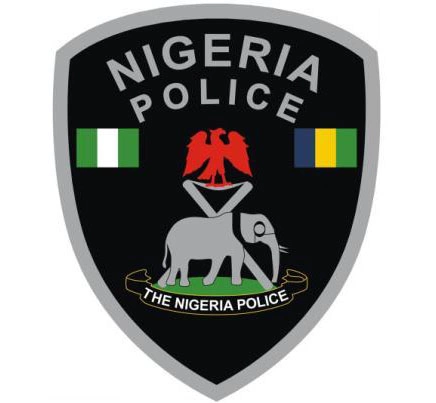
The Royal Niger Company in the north set up the Royal Niger Company Constabulary in 1888. After the formation of the Northern and Southern Protectorates in the early 1900s, part of the Royal Niger Company Constabulary became the Northern Nigeria Police and part of the Niger Coast Constabulary became the Southern Nigeria Police. Most police were associated with local governments during the colonial period.
Finally In the 1960s, these forces were first regionalised and then nationalised under the First Republic as the Nigerian Police Force (NPF).
The NPF carried out conventional police work and was responsible for internal security in general; and to support the prison, immigration, and customs services; and for performing military duties within or outside Nigeria as directed.
Plans were made to expand the force to 200,000 in mid-1980. By 1983, the strength of the NPF was almost 152,000 according to the federal budget, but other sources said it was between 20,000 and 80,000 and According to other reports, there were more than 1,300 police stations in the country.
Although Police officers were not usually armed at that time, they were issued weapons when required for specific missions or circumstances.
Deployment was often done throughout the country but Babangida announced in 1989 that a larger number of officers would be posted to their native areas to facilitate police- community relations.
👉 Relocate to Canada Today!
Live, Study and Work in Canada. No Payment is Required! Hurry Now click here to Apply >> Immigrate to CanadaNo report however was gotten as to how efficient this idea was in facilitating police work in the country. The NPF was reorganized into seven area commands all over the country In late 1986, which superseded a command structure corresponding to each of the States of Nigeria.
Each of these commands was headed by a commissioner of police and was further divided into police provinces and divisions under local officers.
NPF headquarters was itself an area command but was also responsible for supervision and coordination of the other area commands.
Read Also: Issues Affecting The Nigerian Police Force
These Area Commands were later grouped under major Zonal Commands as follows:
Zone 1, with Headquarters in Kano, with Kano, Kastina, and Jigawa Commands
Zone 2, with Headquarters in Lagos, with Lagos, and Ogun commands
Zone 3, with Headquarters in Yola, with Adamawa, and Gombe Commands
The reorganization was prompted by a public eruption of tensions between the police and the Nigerian Army which led to the suspension of a superintendent for a time for grumbling that the army had taken over police functions and kept police pay low.
There were also fights between police and army officers over border patrol jurisdiction. This incident led to the dismissal of about 2,000 constables and 400 senior police officers by mid-1987, leaving senior police officers disgruntled.
The then chief of staff of the armed forces announced a thorough reorganization of the NPF into the seven new area commands and five directorates (criminal investigations, logistics, supplies, training, and operations) each directorate and area command headed by a deputy inspector general.
Another reorganization of the NPF was announced in mid-1989 after the AFRC’s accepted a report by Rear Admiral Murtala Nyako who later became former governor of Adamawa State.
The NPF also created a Quick Intervention Force in each state apart from the mobile police units, specifically to monitor political events and to quell unrest during the transition to civil rule.
Each state unit which had between 160 and 400 police personnel was commanded by an assistant superintendent of Police and equipped with vehicles, communication equipment, weapons, and crowd control equipment, including cane shields, batons, and tear gas.
Ranks of the Police Force and their symbols
The following are the ranks of the Nigeria Police with their symbols arranged in ascending order of seniority. The rank of constable is the most junior and has no symbol so it is not included in this write up:
1. Corporal
Second most junior rank in the force. It is the rank superior the rank of Lance Corporal.
Read Also: 10 Problems of Nigerian Police and Possible Solutions
2. Sergeant
This is the third most junior rank of the Police Force. It is superior to the first two and junior to Sergeant Major.
3. Sergeant Major
This is the fourth rank of the force and that is superior to Sergeant. It is the first rank that carries a symbol different from the first three.
4. Inspector
There are three ranks under the Inspector rank represented by the badges below. The first badge indicates the Cadet Inspector, the second indicates the unconfirmed Inspector while the third badge indicates a confirmed Inspector. The fourth is for the principal Inspectors and the last is reserved for the Chief Inspectors.
5. Assistant Superintendent
There are two ranks under this rank. The first picture is for an Assistant Superintendent who’s on probation while the second is for the confirmed Assistant Superintendent. It is also the first rank of cadet officer cadre of the force.
6. Deputy Superintendent
The rank superior to Assistant Superintendent and next to the Superintendent rank. It is a senior rank in the force.
Read Also: Nigeria police salary structure 2018
7. Superintendent
This is the fourth highest rank in the force and the second highest among the Superintendents after Chief Superintendent.
8. Chief Superintendent
This is a senior officer rank which is the highest of the Superintendent and is the third highest rank in the force only junior to the Commissioners and Inspectors General.
9. Commissioner of Police
This is the second highest rank of the force. It is divided into three ranks whose rank symbols are shown below. The first badge is for an Assistant Commissioner, the second for Deputy Commissioner and the third for the Commissioner himself. The Commissioner is the head of the Police in a state.
10. Inspector General
There are three ranks under this ranks and the highest in the Police Force as shown by the symbols below. The first badge is for assistant inspector general, the second is for deputy Inspectors General and the third is the Inspector General himself.
The Inspector General is the head of the Police Force and is appointed by the reigning president of the Federal Republic of Nigeria.
Read Also: Nigerian Police Ranks and Salaries Structures
Conclusion
For those looking for information on the Police Force, I hope this helps you to find what you seek. Thank for reading.
